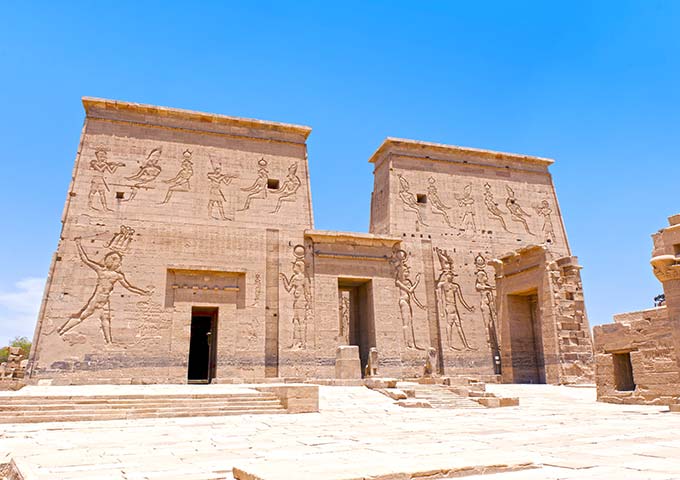The Philae Temple dedicated to the Goddess Isis in Upper Egypt is situated in one of the most idyllic settings in Egypt although this is more from necessity than by natural design. After the building of the first Aswan Dam, rising waters used to lap around the Temple, submerging it for half the year. During that time, tourists would still visit the Temple, catching sight of the shadows beneath the translucent water.
Once work began on the new Aswan High Dam, it became apparent that the temple would be lost forever. UNESCO and the Egyptian authorities organised a huge operation to relocate the Temple to the nearby Aglika Island, which, similarly to Abu Simbel, was landscaped to match the original site. The new location is set amid volcanic outcrops, perched beautifully on the deep blue lake, however, it no longer faces Biga Island (sacred to Osiris), from where the Temples holiness derived.
Most people visit Philae on day tours from Aswan, either using taxis or minibuses.
The Cult of Isis
Of all the cults of ancient Egypt, none endured longer or spread further than the worship of the goddess Isis. As the consort of Osiris, she civilised the world by instituting marriage and teaching women the domestic arts. As an enchantress, she collected the dismembered fragments of his body and briefly revived him to conceive a son, Horus, using her magic to help him defeat the evil Seth and restore the pine order. As pharaohs identified themselves with Horus, the living King, so Isis was their pine mother – a role which inevitably associated her with Hathor, the two goddesses being conflated in the Late Period. By this time Isis was the Great Mother of All Gods and Nature, Goddess of Ten Thousand Names, of women, purity and sexuality.
By a process of identification with other goddesses around the Mediterranean, Isis-worship eventually spread throughout the Roman Empire (moving as far as modern-day Hungary). The nurturing, forgiving, loving Isis was Christianity’s chief rival between the third and the fifth centuries. Many scholars believe that the cult of the Virgin Mary was Christianity’s attempt to wean converts away from Isis and early Coptic art identifies one with the other, Horus with Jesus, and the Christian cross with the pharaonic ankh.













